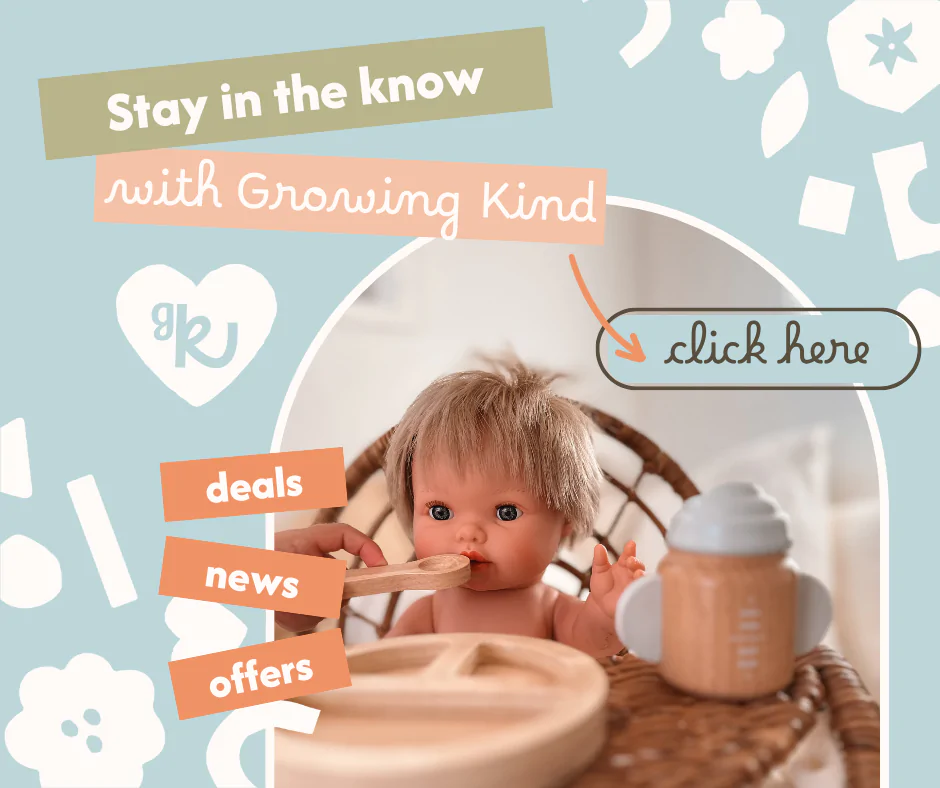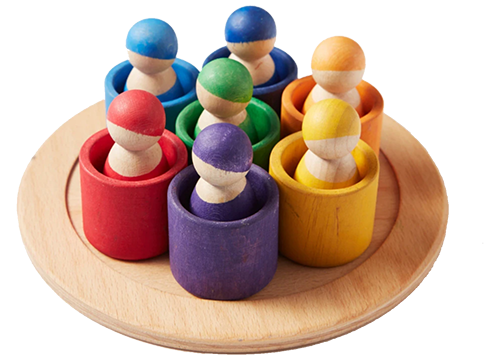BY AMIE – GROWING KIND
What is a Kind Space?
Introducing Segment 1 of #kindspaces ; the foundations.
Kind Spaces will be an evolving framework to follow when creating a learning environment for your children or classroom. Kind Spaces can be created indoors and/or outdoors, depending on your children needs and accessibility. A #kindspace is much more than a pretty shelf; it is an environment purposefully created with the intention of fostering children’s learning and development, whilst adhering to ‘kind’ practices.
A kind space takes into consideration the following:
- Space
Ensure that there is enough space for your child to play. A learning environment doesn’t have to be a dedicated room, it can be a corner of the lounge room a backyard. Always ensure that there is enough space for your child to love and manipulate the resources in the room. For larger rooms shelves, room dividers, rugs or plants can define play spaces and guide children where one area ends and another begins.
*The Education and Care Services National Regulations stipulates that early childhood classrooms have at least 3.25 square metres of unencumbered indoor space.
- Lighting
Consider the natural and electronic lighting in the room. A poor lit room can negatively effect a children’s willingness to play, whereas bright lighting can be overstimulating for a child. Natural lighting from a window or skylight is always best.
*A UK study found that natural light (but not direct sunlight) and good air quality were by far the most significant factors correlated with high student learning outcomes.
- Temperature
Similar to lighting, it is important to consider sources of air flow. Are there fans, windows or air conditioning available? Open windows with natural air flow are optimal.
* Studies show that high classroom temperatures, as well as low classroom temps, can affect a student’s ability to learn and function, particularly with reading comprehension and physical tasks. 24 degrees is optimal.
- Resources
When acquiring resources it is important to consider the abilities of your child and the environmental impact. Wherever possible source secondhand or reused items. For all new purchases consider a lasting material such as wood. Natural and open-ended resources provide the richest learning opportunities. A kind space considers children natural developmental urges and therefore supports play schemas. Resources should provide opportunity to connect, orientate, transport, throw, position, envelope and rotate (next weeks segment will explain schemas in depth).
- Accessibility
Children should be able to access their learning materials, therefore consider the height of storage. Children’s movement should be challenged by having resources at different heights. Consider some activities on different surfaces for standing, horizontal, vertical play, kneeling or sitting.
- Age appropriateness
Resources should adequately challenge a child. If a child is provided with puzzles that are very easy then they can become frustrated with play and disinterested, similarly if resources are too complex. Also consider the use of small parts with children under 3 years of age, as these can be a choking hazard. Open-ended resources are wonderful for giving children creativity with their play and suiting a wide range of ages. Blocks can become a phone, a bridge, a fence and more.
- Minimisation
There is a lot of research that suggests children can become overwhelmed in classrooms that have posters hanging from every wall and rooftop. A kind space appreciates organisation and utilises strategies such as toy rotations or toy swaps.
Connect on socials
Growing Kind
facebookinstagram




